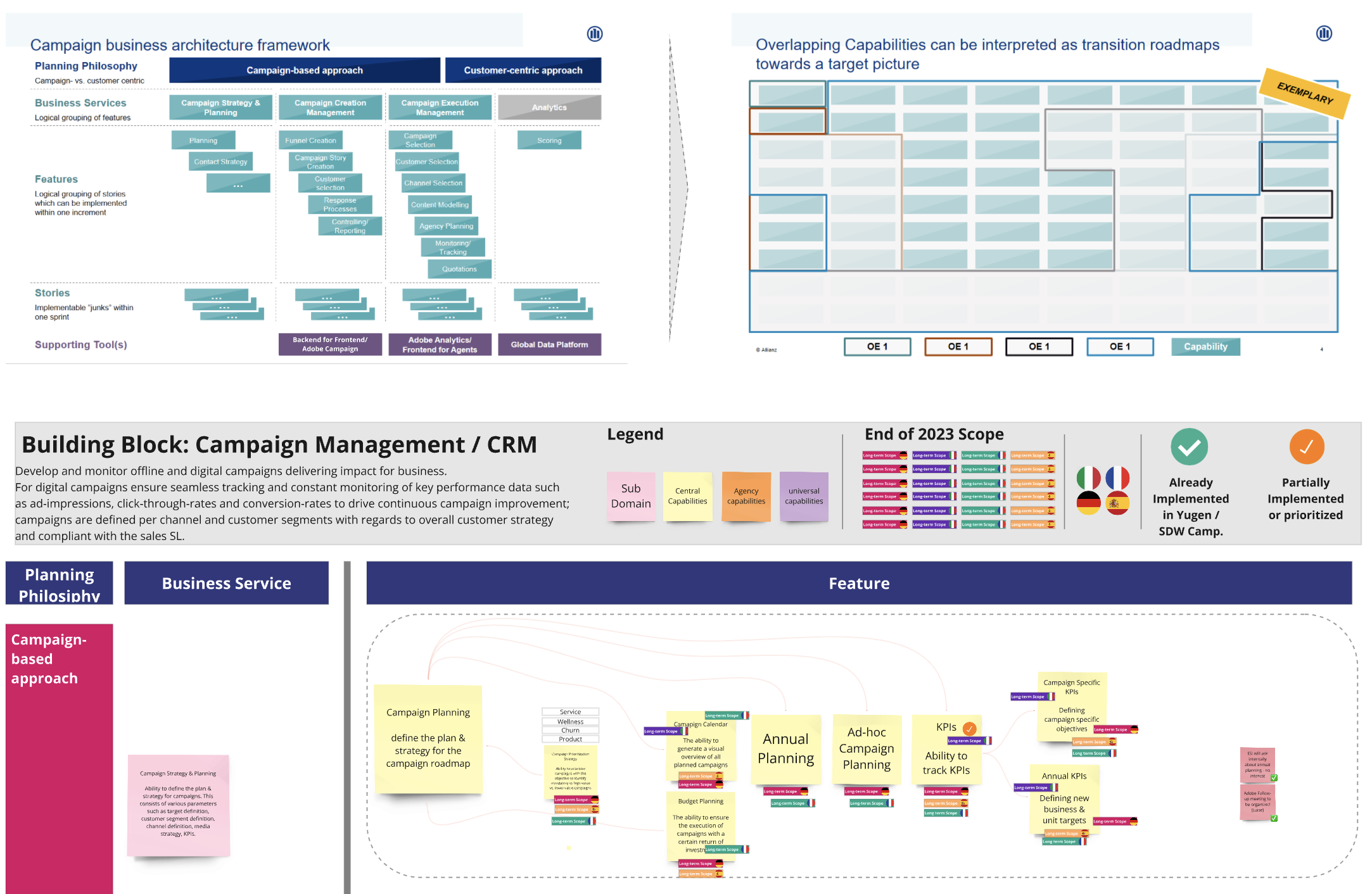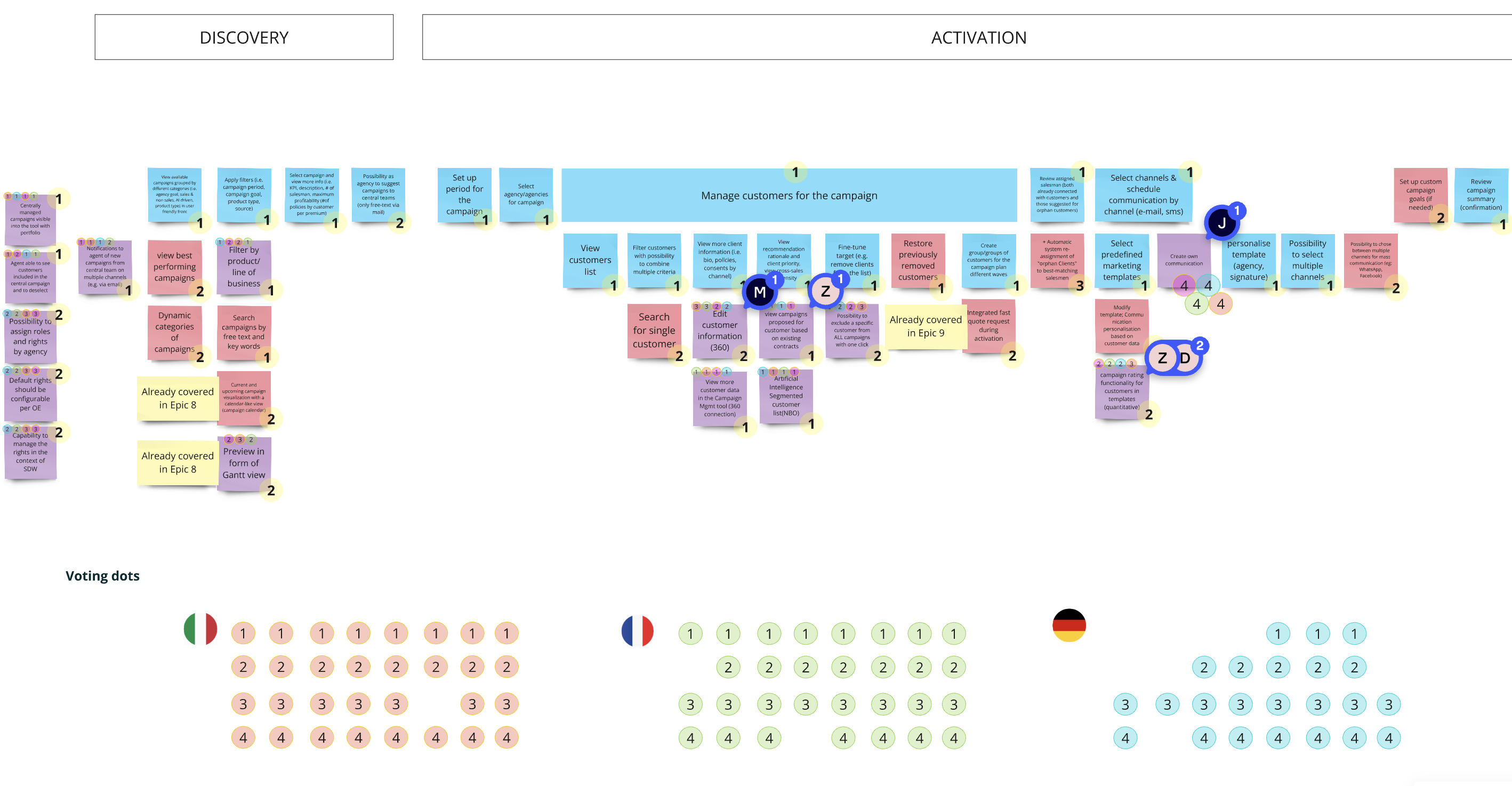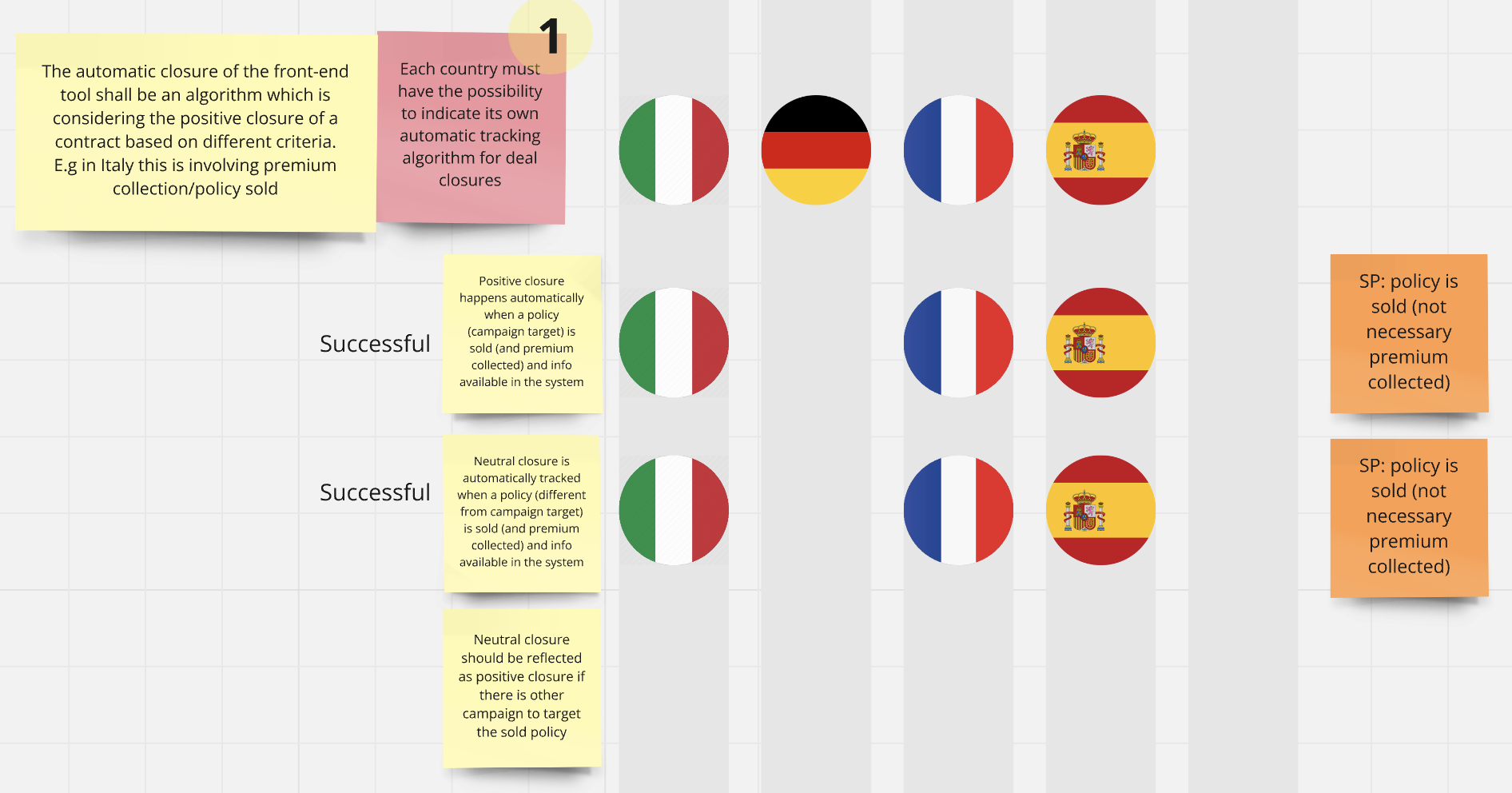 Brief & Challenge
Brief & Challenge Design Outcome
Design Outcome

Sales Digital Workstation or SDW is a platform created from Allianz technology's Global Digital Factory to handle all the sales's activities that occur throughout the sale funnel. This platform is available to all the agency that partnered with Allianz within Europe, Asia and Australia. Most Allianz in different countries share the same process but there are some requirements that different, so the application within SDW is available to configure based on Allianz Headquarter's requirements in each country.
I co-led the visioning session for the Campaign Management System, bringing together stakeholders from all participating countries to align on requirements and strategic direction. This session was critical in transforming the system from an MVP in Italy into a scalable, Europe-wide tool. By facilitating discussions with Product Owners, business leaders, and local market representatives, I ensured that the tool could adapt to regional needs while maintaining global consistency within Allianz’s ecosystem.
During the design stage, I worked closely with Senior Designer Pimteera Chalermmeeprasert, assisting in refining user flows, interaction models, and interface structures to enhance usability. A key contribution of mine was leading the design of the Customer Information Panel, a feature designed to streamline user access to critical customer data. This panel was later adopted as a core design pattern, influencing multiple tools within Allianz's ecosystem and establishing a reusable component standard across various platforms.
By ensuring compliance with NDBX, Allianz’s global design system, and integrating user research insights, my contributions helped shape a highly configurable, scalable, and user-friendly campaign management system. This transformation positioned the tool as a standardized yet adaptable solution for managing campaigns across diverse European markets.
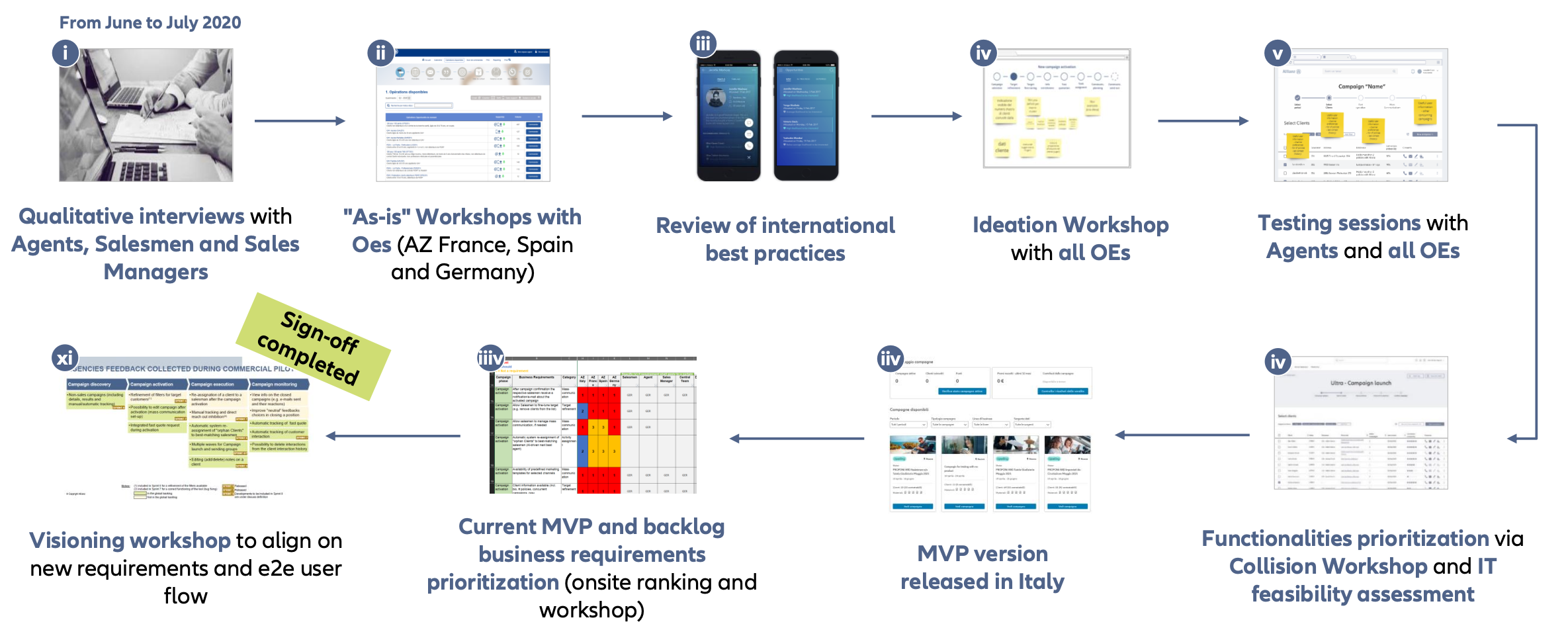
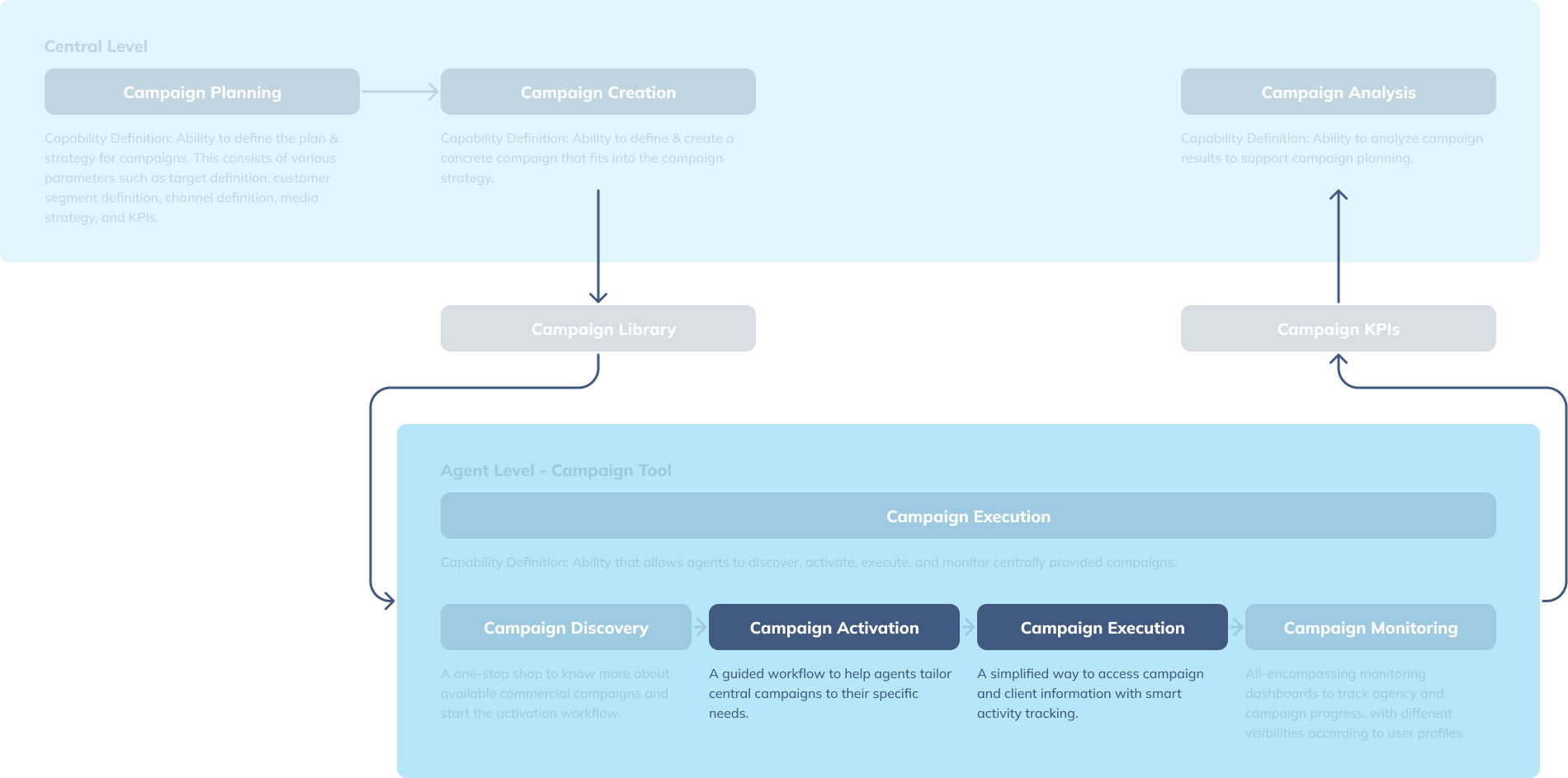

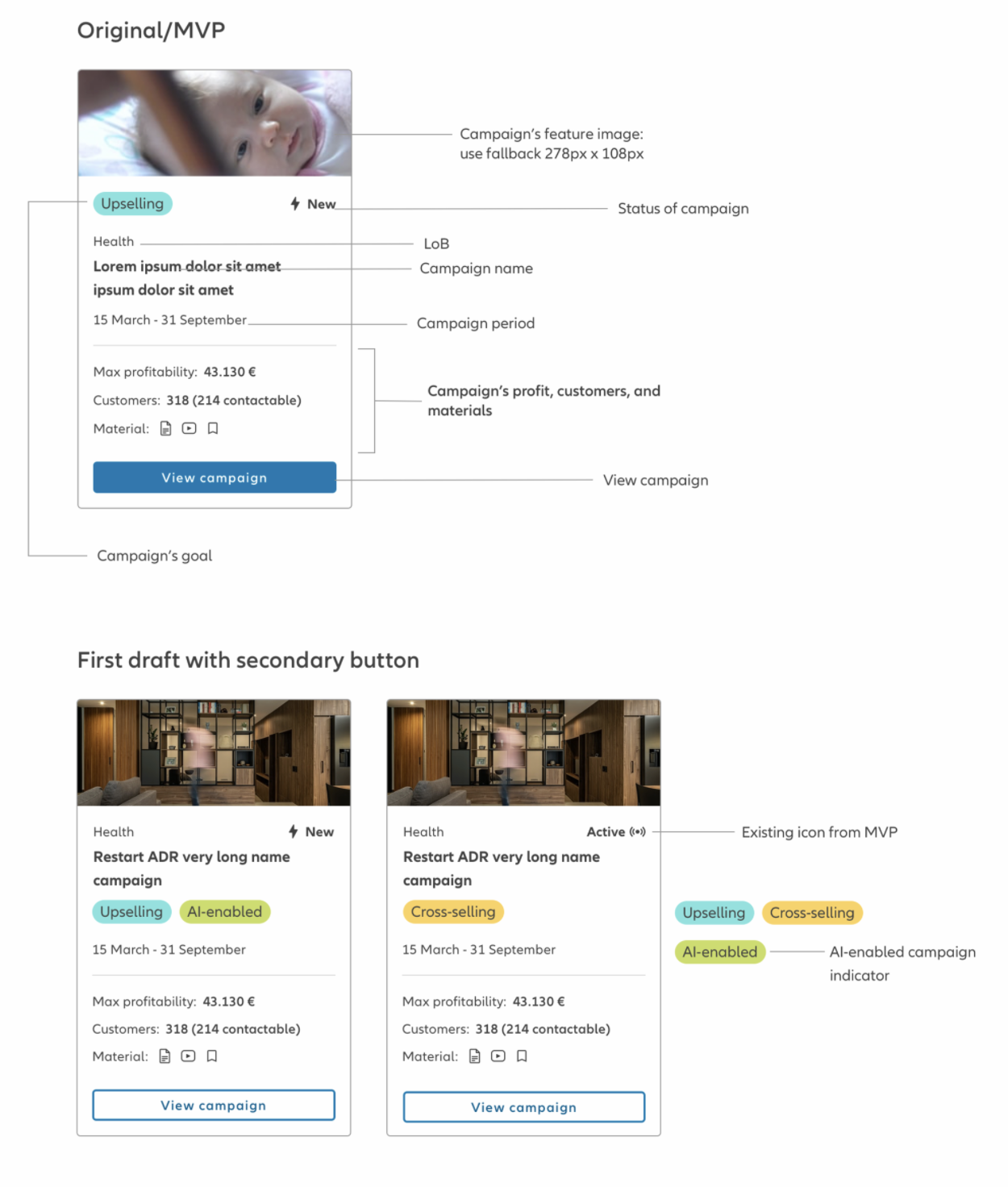

The design of the campaign card follows the structure of the Customer Card from Customer360, another SDW software, ensuring consistency across platforms. By leveraging this established framework, the campaign card benefits from a proven layout, making it more intuitive for users already familiar with Allianz’s ecosystem.
A key focus in the design is visual hierarchy, which enhances data visibility and readability. The most critical campaign details, such as title, status, and key dates, are prominently displayed, while secondary information is structured using progressive disclosure to reduce cognitive overload. This approach ensures that users can quickly scan and prioritize information, improving decision-making and efficiency.
By aligning with existing SDW design patterns, the campaign card seamlessly integrates into the Campaign Management System, reducing development effort, increasing scalability, and ensuring a cohesive user experience across Allianz tools.

I led the design of the Customer Information Panel, a feature that consolidates comprehensive customer data from various SDW software into a single, accessible interface. This panel was designed to streamline workflows for agents, providing a holistic view of customer information without the need to switch between multiple tools.
By integrating data from different SDW systems, the panel enhances efficiency, accuracy, and decision-making, ensuring that agents can quickly access key details such as customer interactions, campaign history, policy details, and engagement insights. The design follows NDBX standards, ensuring visual consistency, usability, and scalability across Allianz platforms.

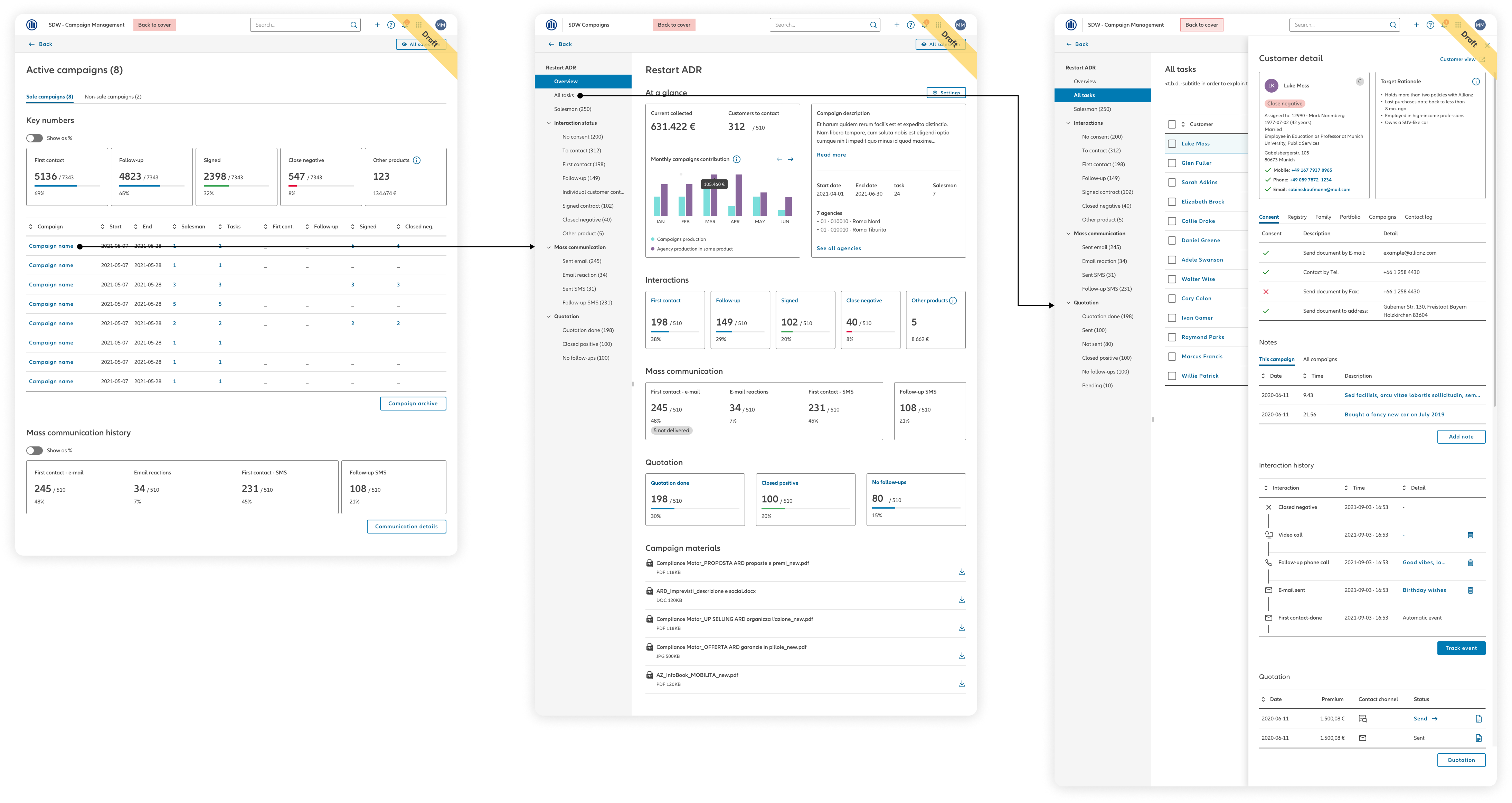
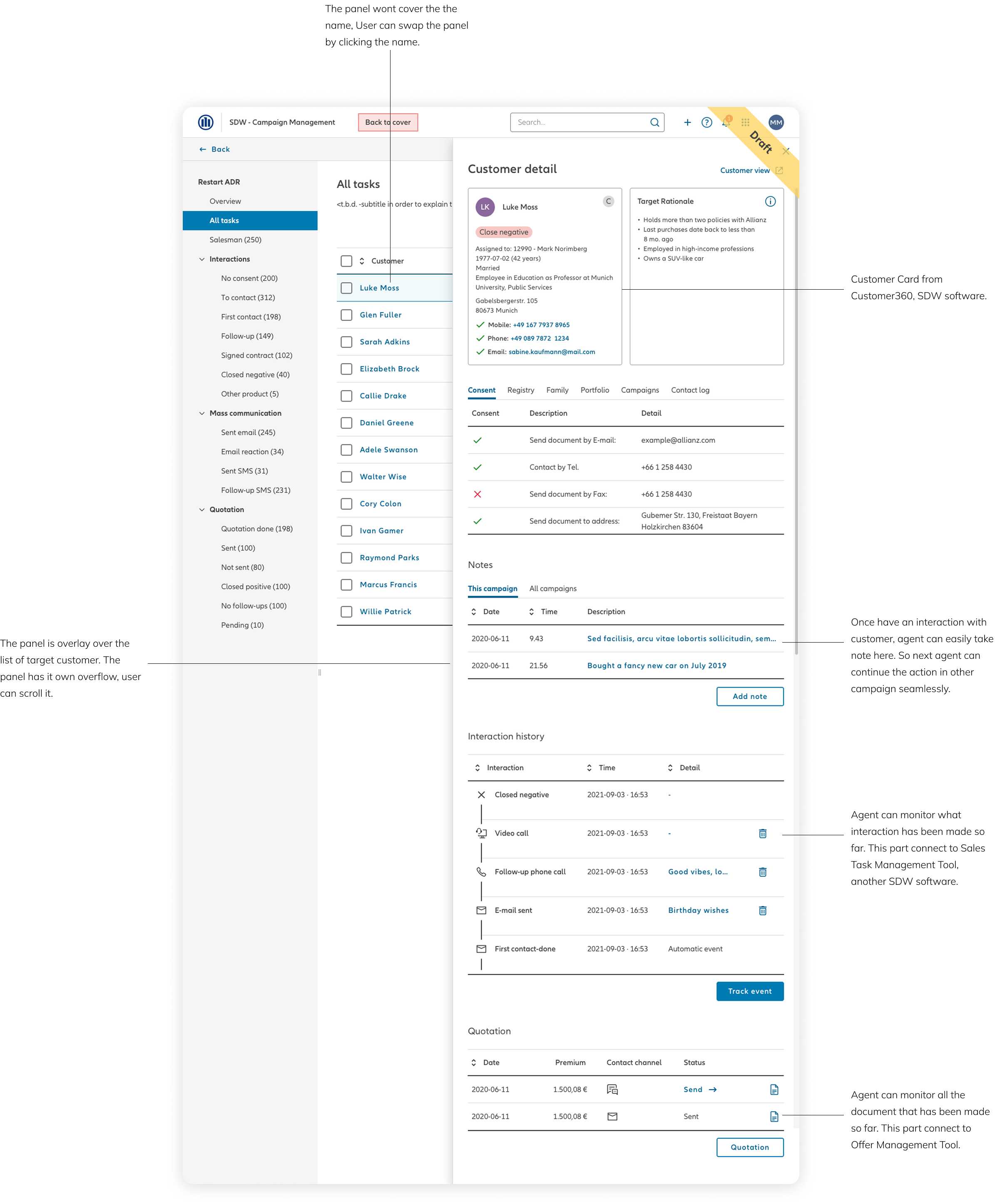
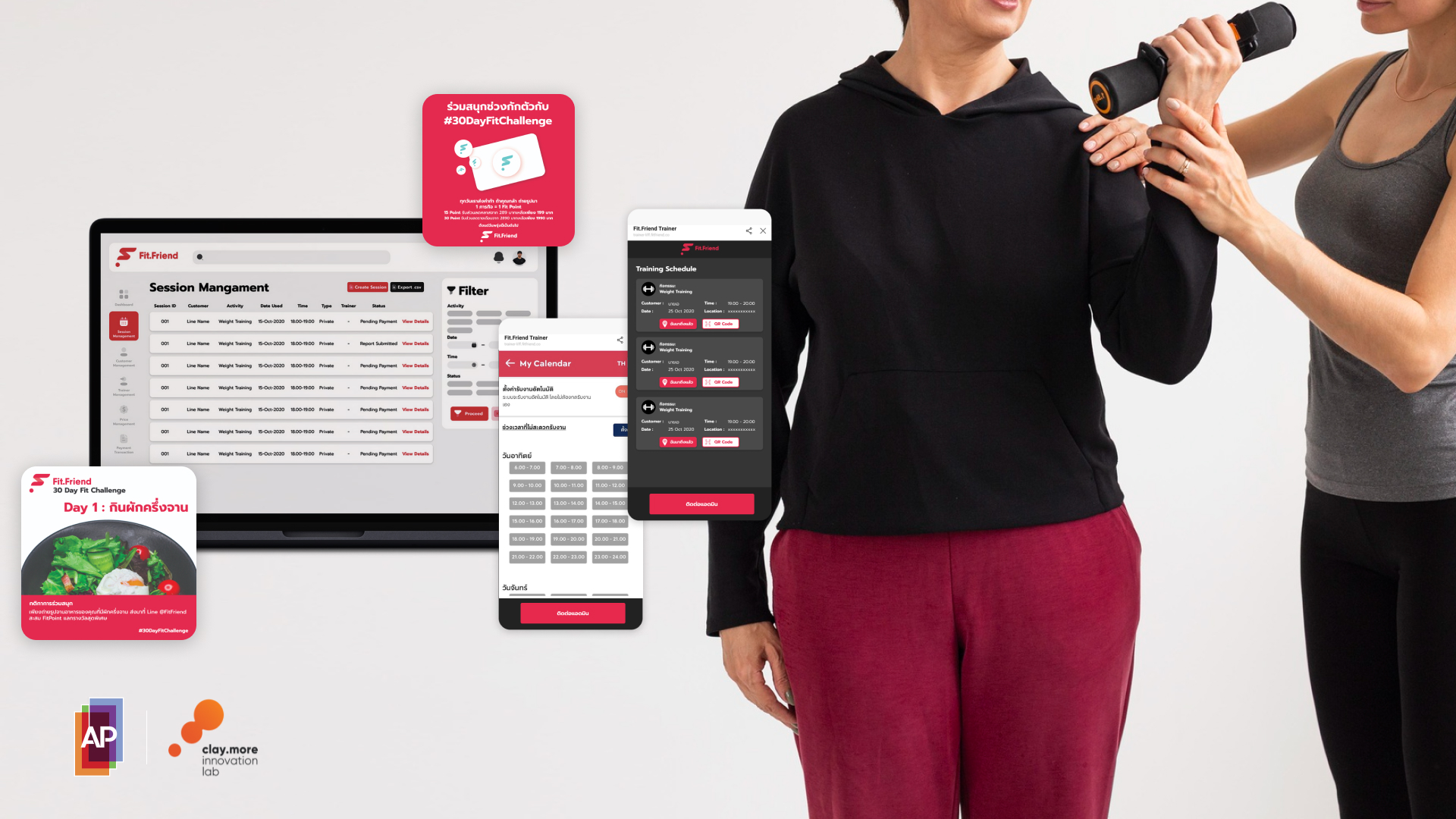

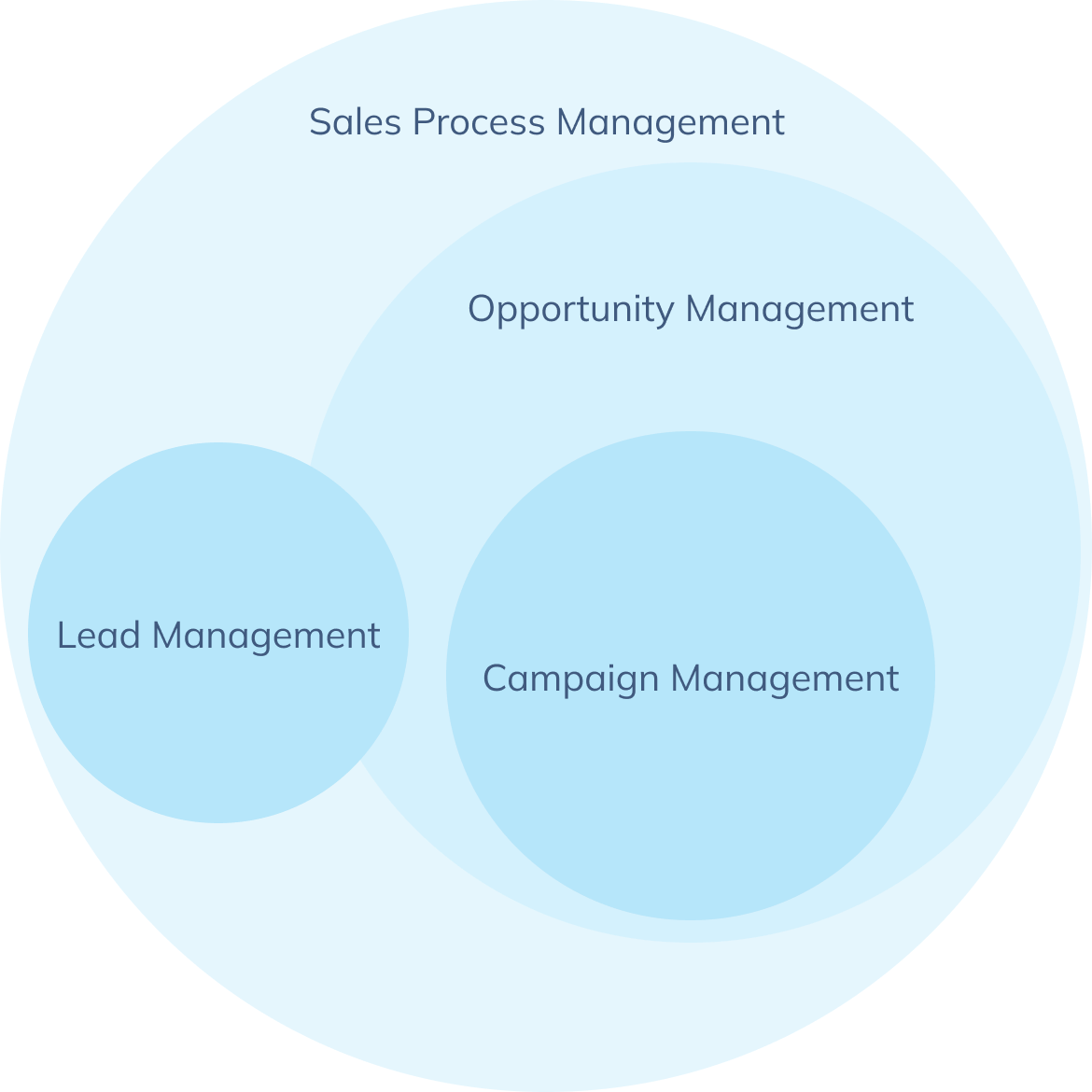
Sales Process Management is an E2E process starting with lead creation and ending with a policy issuance (or fullfiling the need of the customer).
Lead management is the process to create and qualify leads
Opportunity Management encompasses all activities meant to transform a qualified lead (prospect) into a customer, independently on the business event providing the prospect or the type of contact / handling followed
Campaign Management is one specific way to execute opportunity management. It includes communication to specific target groups of (potential) customers typically addressed through mass communication
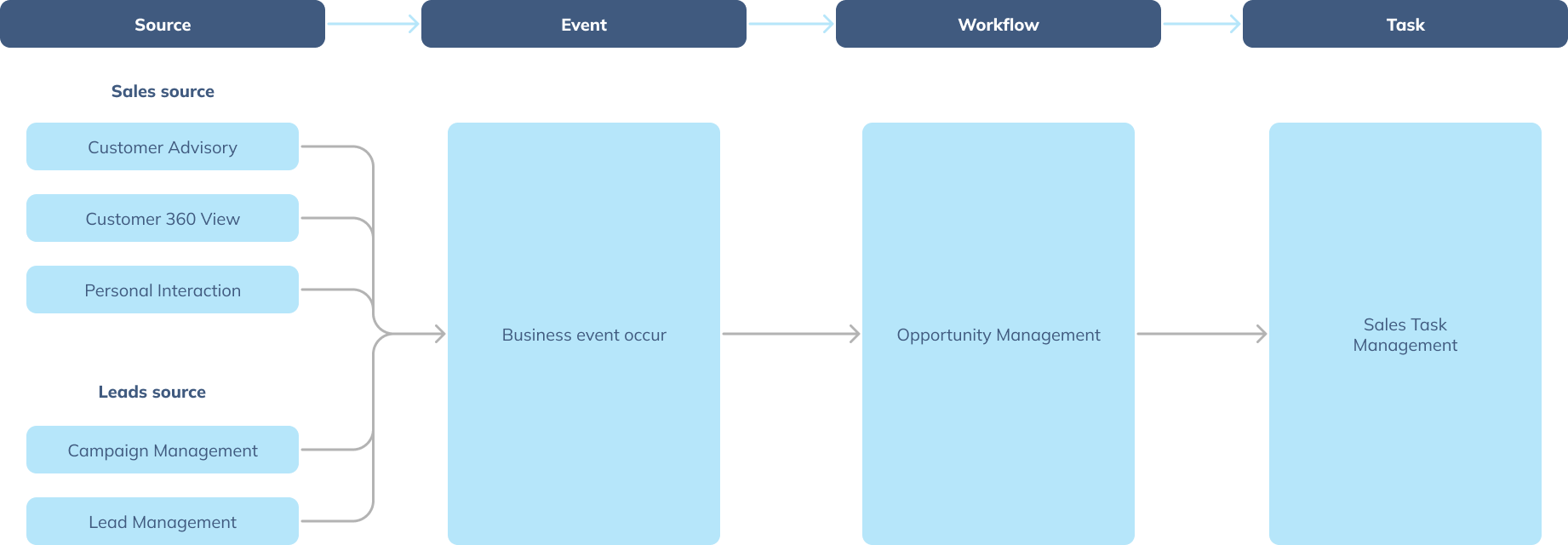
The sales process is driven by business events originating from different modules. Sales sources focus on identifying the customer from different angles. Leads source focuses on gathering the leads from various digital touchpoints. Agents will gather all the information and then will interact with them in multiple ways. After that, the success source will be collected and managed by Opportunity Management, then analysed and processed by Sales Task Management by automatically creating tasks and reminders whenever possible and useful.
The Campaign Management Tool is designed for the end-to-end management of campaigns throughout their entire lifecycle. It enables users to plan, execute, track, and optimize campaigns, ensuring seamless coordination across different stages.
As part of this system, the Campaign Management System (CMS) serves as a specific execution tool for opportunity management. It allows users to communicate with a targeted group of potential customers through mass communication channels, such as email, SMS, or notifications. By integrating campaign strategy with customer outreach, CMS ensures that marketing efforts are efficient, data-driven, and aligned with business objectives, enhancing engagement and conversion rates.
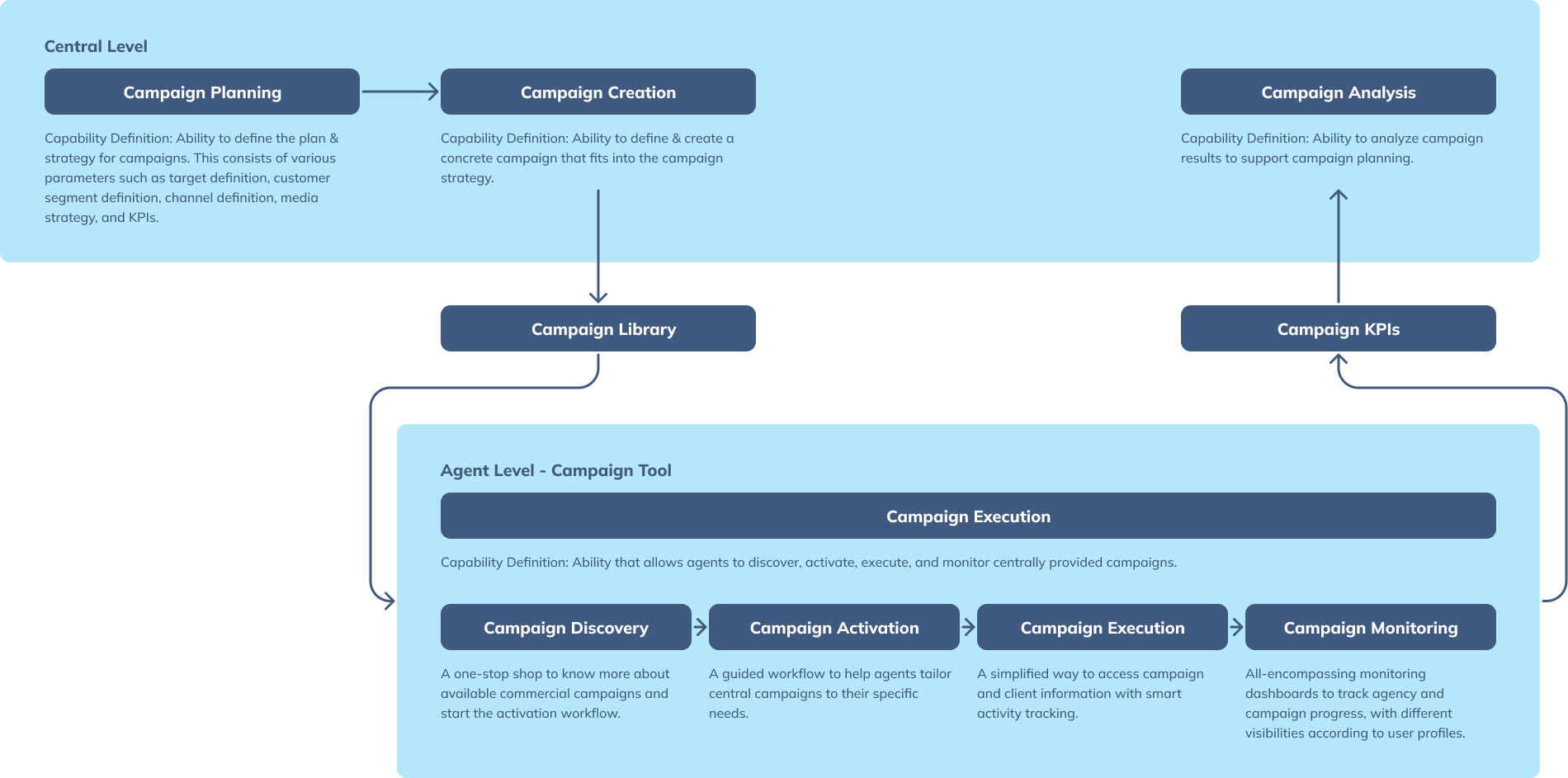
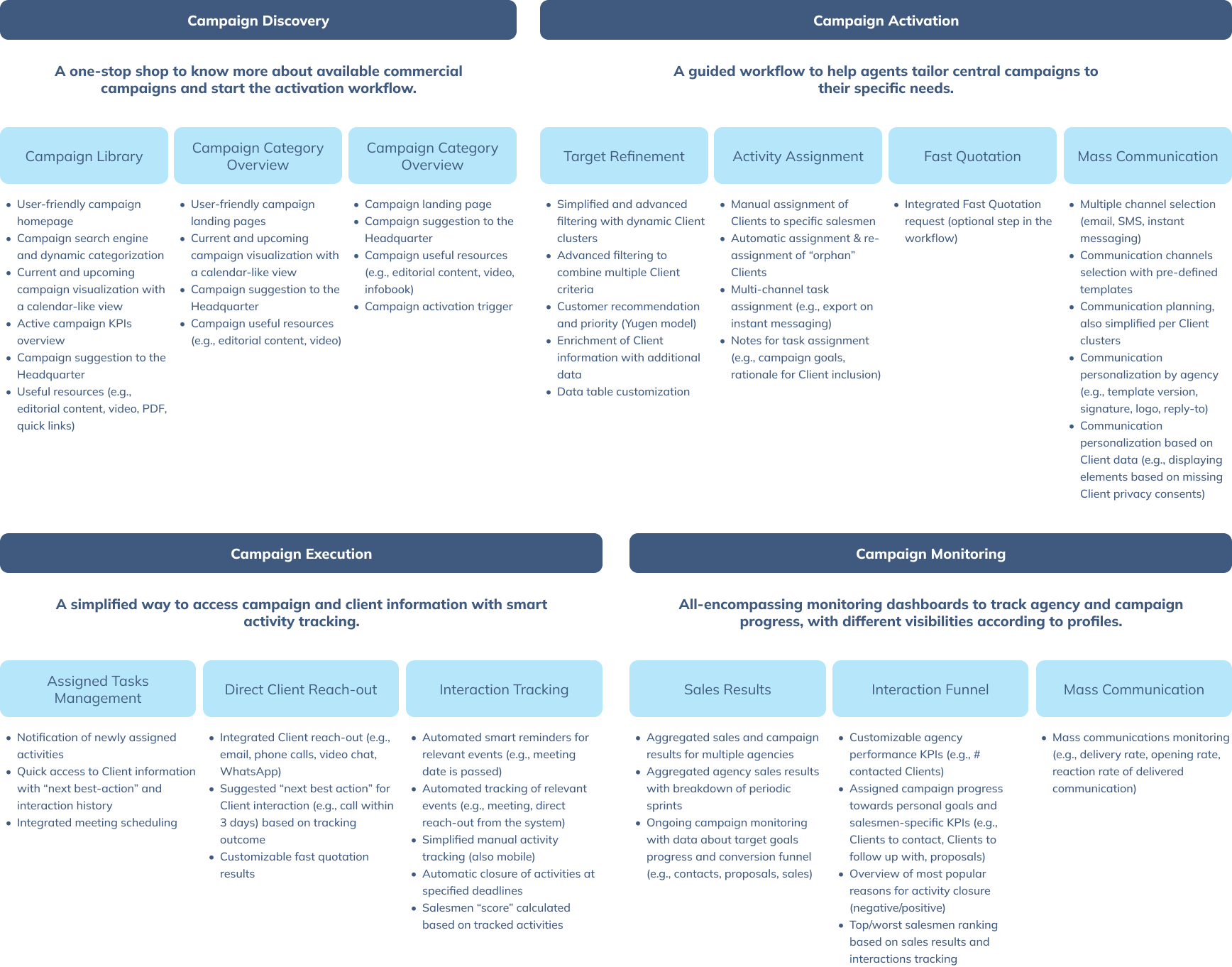

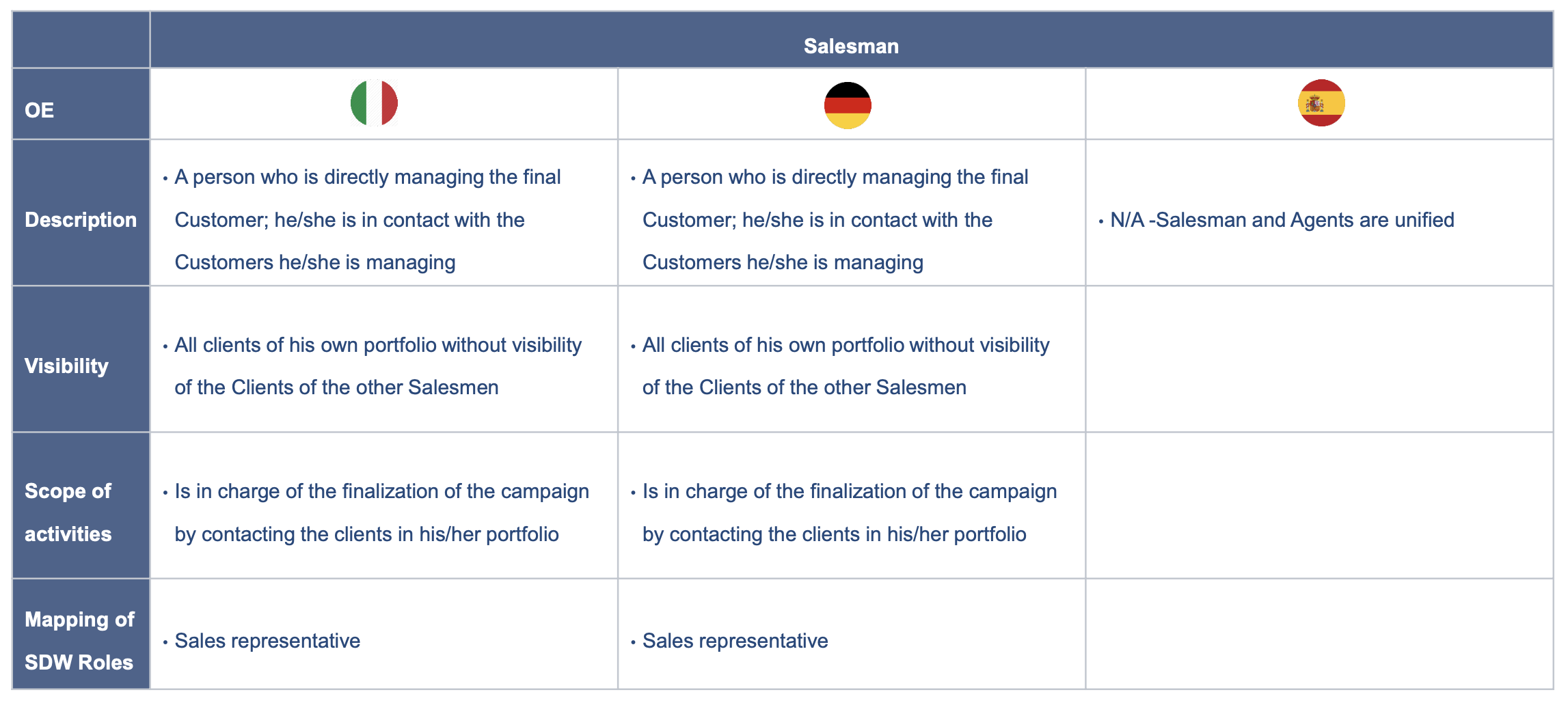
I co-led the visioning session for the Campaign Management System, uniting stakeholders from multiple countries to align on requirements, pain points, and strategic goals. This session was essential in scaling the system from an MVP in Italy to a Europe-wide tool, ensuring it could adapt to regional variations while maintaining a standardized framework.
Using Miro, a collaborative online whiteboard, we facilitated real-time discussions, mapping workflows, and defining key functionalities with participants across different time zones. This approach enabled seamless collaboration, transparency, and alignment among Product Owners, business leaders, and local market representatives.
Through interactive exercises, we identified commonalities and unique market needs, prioritizing features that would enhance usability and efficiency for agents. The outcomes of this session laid the foundation for a scalable, adaptable campaign management tool, ensuring smooth integration with existing Allianz systems while meeting the diverse needs of European markets.
